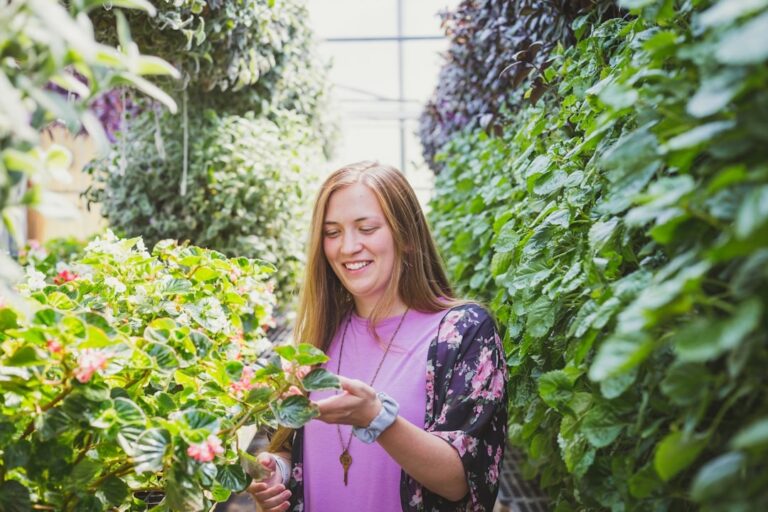Watering Your Garden the Lazy Way
As lazy gardeners, we want to create a garden that cares for itself. But not all rainstorms are created equal, and different ways of artificially watering your garden aren’t equal, either.
Let’s talk about how understanding your soil, rainfall patterns, and nature itself can help you water less. Or not at all.
Know Your Soil and Its Challenges
Every garden’s soil is unique, and how it handles water will shape your gardening experience. Sandy soil drains water too quickly, making it hard for plants to get a proper drink.
Clay soil, on the other hand, often causes water to run off or pool on the surface, struggling to penetrate down to plant roots.
And if even the best soil gets too dry, it becomes hydrophobic, repelling water entirely unless rehydrated slowly and deliberately.
Plants need water to survive, but their roots need air, too. Overwatering suffocates roots, so achieving the right balance is crucial.
The best way to describe it? Your soil should feel like a damp sponge, moist enough for seeds to germinate and roots to thrive, but with plenty of air for breathing.
This balance also encourages microbes, fungi, and other beneficial organisms to keep your soil alive and healthy.
Let Nature Be Your Guide
Instead of relying on fancy watering gadgets, take inspiration from the forest, where soil stays moist even during droughts.
The secret? The ground is always covered with mulch, leaves, or living plants. Covering your soil mimics this process, preventing evaporation and maintaining moisture for longer.
In your garden, emulate natural water flow by observing how rain moves across your property.
Design garden pathways to slow water down, direct it where it’s needed, and keep it on-site. Mulched paths between your garden beds act like sponges, absorbing rainfall and slowly releasing it into the soil over time.
These methods not only reduce the need for watering but also protect plants from drowning during heavy rains.
Common Watering Mistakes
Many beginner gardeners overwater, wanting to give their plants the best start. But watering too much drowns roots and prevents plants from thriving.
Even seasoned gardeners struggle to get the perfect moisture levels, often watering during the hottest part of the day when much of it evaporates. Timing matters, so water in the early morning or evening to make the most of each drop.
Another mistake is using treated water, which can harm beneficial microbes and fungi. Rainwater is always a better option.
If you have to use treated water, let it sit for 24 hours to off-gas chemicals or add Vitamin C powder to neutralize them.
Encourage Deep Roots
One of the keys to lazy gardening is fostering deep, strong root systems. Watering sparingly forces plants to reach deeper into the soil for moisture and nutrients, creating more resilient and self-sufficient plants.
Deeper roots also help plants access hidden nutrients, resulting in healthier growth and more productive harvests.
This deeper rooting process also benefits the soil itself. Roots create organic pathways that improve water permeability, anchor the soil during heavy rains, and leave behind nutrients when they decompose.
A thriving root system means less watering, healthier plants, and even tastier harvests.
Timing and Seasonal Adjustments
Understanding seasonal rainfall patterns can help you water less. In early spring, frequent rains establish plants.
As summer progresses, cutting back on watering mimics natural drought conditions, encouraging plants to fruit and ripen. Tapering off watering in late summer signals plants to focus on seed production, ensuring next year’s crops.
For shallow-rooted plants, provide extra care by planting them under the shade of taller crops.
This keeps the soil cool and reduces evaporation, helping tender plants thrive even in hot weather.
Embrace Biodiversity
Interplanting is another trick lazy gardeners can borrow from nature. Mixing crops like tomatoes, okra, cucumbers, and flowers creates a biodiverse garden that benefits every plant.
Different root structures improve soil permeability, while shaded soil stays cool and retains moisture longer. This layering method mimics the efficiency of forests, allowing you to grow more in less space while protecting your soil.
Build Resilience Through Soil Life
Healthy soil teems with microbial and fungal life. Mycorrhizal fungi, for example, form symbiotic networks with plant roots, exchanging nutrients and keeping soil fertile.
Supporting this ecosystem with rainwater, organic matter, and minimal disturbance creates a thriving environment for your plants.
Even your garden pathways play a role in this system. Over time, decomposing mulch becomes a source of organic matter for next year’s beds.
Simply rake it onto your garden beds and replace the pathways with fresh mulch; an easy way to keep the cycle going.
Lazy gardening is all about working with nature, not against it.
By understanding your soil, observing natural water flow, and making small adjustments to your garden design, you can reduce your reliance on watering while still enjoying a lush and productive garden.
Let your plants struggle just enough to grow stronger, and let nature do the rest.




